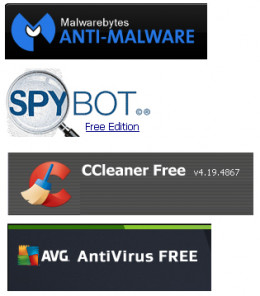

- #Check ccleaner malware how to#
- #Check ccleaner malware mac os x#
- #Check ccleaner malware install#
- #Check ccleaner malware download#
#Check ccleaner malware mac os x#
Windows Mac OS X Google Chrome Mozilla Firefox Microsoft Edge Safari Internet Explorer Stop Push Pop-upsĪbout the CCleaner Trojan.Floxif Research Guide 8: Disable CCleaner Trojan.Floxif Push Notifications in Your Browsers.Guide 7: Eliminate CCleaner Trojan.Floxif from Internet Explorer.Guide 6: Remove CCleaner Trojan.Floxif from Safari.Guide 5: Uninstall CCleaner Trojan.Floxif from Microsoft Edge.Guide 4: Erase CCleaner Trojan.Floxif from Mozilla Firefox.Guide 3: Remove CCleaner Trojan.Floxif in Google Chrome.Guide 2: Get rid of CCleaner Trojan.Floxif on Mac OS X.
#Check ccleaner malware how to#
#Check ccleaner malware download#
Besides collecting lists with programs installed on your PC, the network information from it and unique identifiers, the virus may also connect to a remote host and download malware.
#Check ccleaner malware install#
The end goal of the Floxif malware is to steal information from your computer or install other malware on it. WahReferenceContextByHandle (ws2help.dll)īut this is not where the infection process ends, the Trojan.Floxif malware also tries to delete system files from Windows itself: In those keys, entries are created with the following values in them:Īnother activity which is performed by this virus is that it connects with the following Windows application programming interfaces (APIs): HKEY_LOCAL_MACHINE\SOFTWARE\Microsoft\Windows NT\CurrentVersion\Winlogon HKEY_LOCAL_MACHINE\SOFTWARE\Microsoft\Windows\CurrentVersion\explorer\Advanced\Folder\SuperHidden HKEY_CURRENT_USER\Software\Microsoft\Windows\CurrentVersion\Policies\Explorer → HKEY_CURRENT_USER\¬Software\¬Microsoft\¬Windows\¬CurrentVersion\Explorer\¬Advanced To do this, it attacks the following Registry sub-keys: In addition to this, the Trojan.Floxif may also set the registry entries so that it remains hidden on your computer. → “AppInit_DLLs” = “C:\Program Files\Common Files\System\symsrv.dll” In order to execute the malicious file when Windows boots up, the virus may add the following registry entry in the “Windows” sub-key, located in HKEY_LOCAL_MACHINE’\SOFTWARE\Microsoft\Windows NT\CurrentVersion\: → C:\Program Files\Common Files\System\symsrv.dll The file is about 67 kilobytes in size and has the following location: When the Floxif trojan has been started, it immediately executes a script that drops a.

The activity of those versions, however is rather similar. The Floxif Trojan is a malware that has several different versions. If your computer has CCleaner installed on it, it is advisable to immediately remove it and read the following article to learn how to detect and remove the CCleaner Trojan.Floxif from your computer effectively. Besides being a Keylogger, the Trojan may also steal your login details, financial information and even download and install other malware such as ransomware, for example, which locks your documents and holds them hostage for a ransom payoff. The hackers managed to slither the Trojan.Floxif infection which drops a file on the computer and begins to perform a variety of malicious activities which are the last thing you want on your computer. This article aims to explain what Is the Trojan.Floxif infecton which is spread via CCleaner and how to remove Floxif malware from your computer.Ī scandalous infection has been detected by malware researchers which infects computers directly via the CCleaner version of the program. Threat Summary CCleaner Trojan.Floxif – How Did I Get Infected Trojan.Floxif – Activity Analysis The current non-compromised version at the time of this writing is. To determine the version of CCleaner you are currently running simply launch the application and check the version number on the app’s upper-left next to the logo. In other words, to the best of our knowledge, we were able to disarm the threat before it was able to do any harm.” Check Your Version of CCleaner Users of CCleaner Cloud version have received an automatic update. In a blog post this morning, Piriform exec Paul Yung writes, “we’re moving all existing CCleaner v users to the latest version. Luckily, the company is taking the necessary steps to correct the situation. According to Avast, about 2.27 million people ran the affected software. The malware affects CCleaner version and CCleaner Cloud version. “The compromise could cause the transmission of non-sensitive data (computer name, IP address, list of installed software, list of active software, list of network adapters) to a 3rd party computer server in the USA,” Piriform says in a statement issued on Monday. The malware allowed an infected system to be remotely controlled and collect data from your computer.


 0 kommentar(er)
0 kommentar(er)
